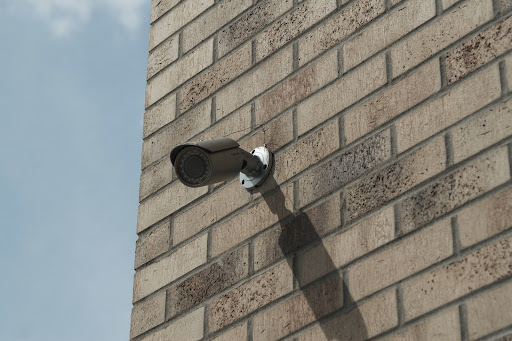Smartphones – people don’t go anywhere without them. You can take video calls, check your emails, take professional-grade photos, and even buy your groceries from your phone. But that’s not all there is to it. Though it often goes unnoticed, your smartphone can help to keep you andyour home safe. With smart home devices, your phone can keep you in the loop, even when you’re away. Not only that, but you can also control certain settings in your home from any location. Ready to optimize your home’s security with the click of a button? Keep reading to see how your phone can help.

What Are Smart Home Products?
You’d be surprised how many smart products exist for your home. From smart lighting, to electronic locks, to smart thermostats, it’s easier than ever to stay on top of what’s going on inside your home. Smart products like these can keep you safe in several ways. They can secure your home and prevent burglary, help you avoid electrical fires and energy waste, and give you some very useful insight into who has been near your front door. Let’s learn a little more about the various smart home products in the market.
Save Energy with Smart Lighting
With a special lightbulb, you can control your lights from your phone – whether you’re out running errands, or simply too lazy to get off of the couch. These lights are controlled through an app on your smartphone. You can adjust the brightness, color, and turn them on and off through the app.
The advantages to this are twofold: save energy, and prevent theft.
Needless to say, turning off the lights when you’re not in a room is one of the easiest ways to conserve energy and reduce electricity costs. If you leave your home and can’t remember whether you’ve turned a light off, simply check the app and take care of it on the go.
On the other hand, there may come a time where you’ll want to intentionally leave your lights on even when you’re not home. You can use this as a tactic to prevent burglary. No burglar wants to rob a home that looks occupied – using your app to flip on a light even when you’re not inside will quickly ward off any potential thieves.

Lock it Up with Smart Door Locks
It’s hard to imagine why you wouldn’t want a smart door lock for your home. Though there’s nothing wrong with traditional keys, you just can’t beat the level of security that smart locks have to offer. How many times have you left the house in a hurry, only to feel a pit in your stomach as you realize you left the doors unlocked? Smart door locks can fix that.
With a click of a button, at any location, you can quickly regain peace of mind knowing that your home is locked up and secure. There are also smart applications that work specifically for your garage door. This is great for homeowners who tend to enter and exit their home through their garage doors, rather than the front entryway.
Keep an Eye Out with Smart Cameras
Many homeowners and renters alike have decided to install cameras and smart doorbells to protect themselves. With a smart doorbell system, you can see the person on the other side of the door before opening it. This is especially helpful in cases when you’re not expecting a visitor or a delivery.
If you’re not home, the doorbell camera can alert you that someone is at your front door. It will show a video recording, typically with sound, to help you better understand the activity going on near your front door. This gives you solid evidence, should you ever need it, of who was at your front door and when. You can also install cameras inside your home if this makes you feel more comfortable.

Make the Smart Choice by Choosing Pop-A-Lock
We’ve only skimmed the surface in terms of the smart products available to keep your home secure. There are also smart home products such as smart security alarms and smart thermostats that can keep you safe and comfortable.
If these smart devices aren’t enough to keep you relaxed about your home safety, Pop-A-Lock is more than happy to offer our guidance. Whether you’re looking for electronic lock installation or lock repair services, our team is dedicated to putting your safety first. For any trouble with your home’s locks, don’t hesitate to call your local Pop-A-Lock.








